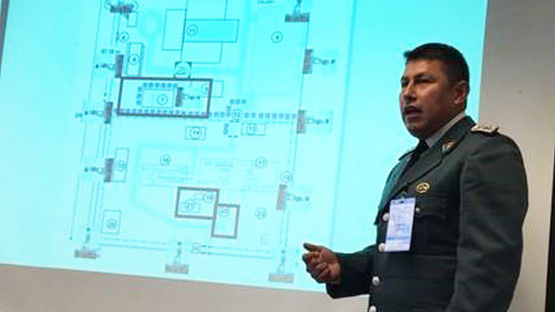Protecting nuclear facilities and material from malicious acts such as sabotage was the focus of a regional training course at the National Institute for Nuclear Research in Ocoyoacac, Mexico, held in late August.
Twenty nuclear regulators, operators, officials and experts from 11 Latin American countries took part in the five-day course that featured interactive sessions and the use of a mock facility. Participants enhanced their ability to develop measures to prevent sabotage of nuclear material and facilities, and to evaluate the physical protection system of facilities.
“The course helped me better understand what exactly is needed for achieving nuclear security. I also learned that it is very important to take into account the safety perspectives for the physical protection,” said Cristiane Oliviera, Researcher National Nuclear Energy Commission of Brazil.
Assel Khamzayeva, a Nuclear Security Officer at the IAEA, said the course, one of 80 the IAEA offers in nuclear security, helped resolve “challenges related to differences in the approach and culture between the nuclear safety and security. This training course had a great mix of participants,” she said. “This diversity supported learning, because all stakeholders need to be involved to achieve nuclear security in their country. The variety of backgrounds among participants provided for fruitful discussions based on experiences from various viewpoints.”
To support learning, the course used a model nuclear facility called Hypothetical Atomic Research Institute (HARI). By focusing exercises and other training content on this mock facility, participants could discuss and share nuclear security strategies in an open non-sensitive learning environment.
The development of HARI began in 2012 by the IAEA with support from Member States, and is used as a learning tool in several nuclear security training courses. Such courses are held upon request to support Member States’ work to build capacity in nuclear security.





